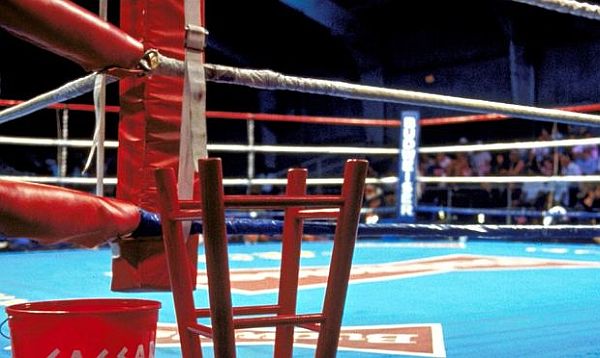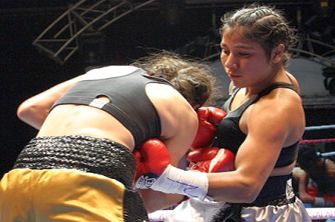A comprehensive guide to jet lag, prevention tips and jet lag remedies.
 Jet lag is a physical reaction to a rapid change in time zones. It affects most travelers, including seasoned fliers like flight attendants and pilots. Common symptoms include disorientation, irritability, fatigue, swollen limbs and eyes, headaches, cold-like symptoms, and irregular bowels.
Jet lag is a physical reaction to a rapid change in time zones. It affects most travelers, including seasoned fliers like flight attendants and pilots. Common symptoms include disorientation, irritability, fatigue, swollen limbs and eyes, headaches, cold-like symptoms, and irregular bowels.It doesn't help that long-haul flying is so debilitating. Dehydration, unfamiliar foods, cramped spaces, recycled air, lack of sleep, uncomfortable clothes, continual low-level noise and connections that disrupt sleep all add to the misery of jet lag, and can even make you feel jet lagged when you're just a little beat up.
Flying from, say, New York City to Santiago won't produce jet lag in the true sense because both cities are in the same time zone -- but the effects of the long flight might feel quite a bit like classic jet lag. In these cases, you're just tired from the flight, and a good night's sleep and perhaps some exercise will set things right.
On long flights -- especially red-eye flights -- you can lose several hours of sleep time, which can set you back considerably even without the jarring time change. If you live by a regular schedule (up at 7 a.m., in bed by 10 p.m. every night), watch out. Jet lag hits those with rigid body clocks the hardest. For parents, be sure to bring along books and toys your child can play with on his or her own, in case the jet lag hits you differently than it does your little ones.
A general rule of thumb to keep in mind before any long trip is the 1:1 ratio: allow yourself one day to recover for every hour of time difference that you experience. So for Californians visiting the Big Apple, give yourself at least three days to fully adjust to the new time zone.
 Before You Go
Before You GoTreat your body well before you fly. Exercise, sleep well, stay hydrated and stay sober. The worst thing you can do is get on a long-haul flight with a hangover.
Some travelers like to exercise before they go to the airport. (This can actually help you sleep better on the plane.) Once you're at the airport, avoid the escalators and moving sidewalks. Instead, walk and take the stairs on the way to your check-in area and gate connections. You can even get a workout in at some airports; see Pump Up Your Layover for tips.
Adjust your habits before you leave. If you are traveling from the East to the West Coast of the U.S., you're facing a three-hour time change and you should try to adjust your internal clock. Three or four days before you leave, start to stay up a little later than usual, and sleep in a little longer. That way, if you become accustomed to falling asleep at 1 a.m. and waking up at 9 a.m. on the East Coast, it will be the same as falling asleep at 10 p.m. and waking up at 6 a.m. on the West Coast. Traveling west to east, do the opposite: get up and go to bed earlier.
Wearing two watches, one set to the current time, and one to the time at your destination, can help you prepare yourself mentally for the coming time change. Many business travelers also use this tactic to stay in touch with what's happening back at the office.
 During the Flight
During the Flight Perhaps the most effective way to combat jet lag while in flight is to treat your body well. Stay hydrated by drinking plenty of non-alcoholic, non-caffeinated fluids. Don't be afraid to ask your flight attendant for extra water.
Perhaps the most effective way to combat jet lag while in flight is to treat your body well. Stay hydrated by drinking plenty of non-alcoholic, non-caffeinated fluids. Don't be afraid to ask your flight attendant for extra water.Get up out of your seat at regular intervals to walk and stretch. You can also do exercises like toe raises, isometric exercises, stomach crunches and shoulder shrugs right in your seat. This keeps your blood flowing and prevents it from pooling at your extremities, a common phenomenon in pressurized cabins.
Other tips: Get up to wash your face, brush your teeth or just stand for several minutes. Wear loose-fitting clothing that breathes. Bring a neck pillow, eye mask, ear plugs or noise-canceling headphones -- these can be invaluable on red-eye flights. Also, avoid any snug footwear (high heels or wingtips); it is quite possible that your feet will swell in transit, making your post-flight trek to baggage claim a nightmare.
 Medications and Vitamins
Medications and Vitamins Melatonin is a chemical in the body that helps regulate sleep cycles. It can be taken in pill form, and many travelers swear by it for fighting jet lag. However, as popular as melatonin is, it's also controversial. Studies have indicated that incorrect melatonin usage can make you feel even more fatigued, so be sure to read all instructions and consult your physician before taking the product.
One widely available homeopathic remedy is the aptly named No-Jet-Lag. The company claims the chewable tablets address all jet lag symptoms, and offers testimonials from flight attendants and other frequent fliers. A bag of dried cherries is another natural remedy that some travelers use, as these are a good source of melatonin.
Some travelers use sleeping pills, antihistamines and motion sickness pills to induce sleep on planes and at hotels after arrival. While they work for some, others are left feeling miserably groggy. For more information, see Medications for Travel, and consult your doctor before taking any medication.
 If all else fails, try an alternate therapy. Light therapy has become a popular treatment for jet lag. At its heart, jet lag means you're out of step with the rising and setting of the sun, so exposing yourself to light at the appropriate time can theoretically help you align your body with your new time zone. Unfortunately, the jury's still out on the effectiveness of this. The debate centers on precisely what kind of light is best -- natural, artificial, bright or dim. Some researchers and enthusiasts recommend simply spending 15 to 20 minutes in direct sunlight without sunglasses as soon as possible after landing.
If all else fails, try an alternate therapy. Light therapy has become a popular treatment for jet lag. At its heart, jet lag means you're out of step with the rising and setting of the sun, so exposing yourself to light at the appropriate time can theoretically help you align your body with your new time zone. Unfortunately, the jury's still out on the effectiveness of this. The debate centers on precisely what kind of light is best -- natural, artificial, bright or dim. Some researchers and enthusiasts recommend simply spending 15 to 20 minutes in direct sunlight without sunglasses as soon as possible after landing. Dietary Tactics
Dietary Tactics The so-called "jet lag diet," an alternation of feasting and fasting for three days leading up to a long-haul flight, was very popular a few years back. The military tested the diet and concluded, basically, that it is bunk. Nonetheless, Ronald and Nancy Reagan used it during their White House days, and some travelers still do. If you'd like to try it out for yourself, check out the diet regimen.
Restrict your diet to foods that are easily digested, like those that are relatively high in fiber but not too rich. If you're trying to stay awake in order to get your body in step with the local time zone, caffeine can be useful -- but don't go overboard. While it might seem tempting to guzzle several cups of coffee when your eyelids begin to droop, you could end up wide awake at 1 a.m. Be sure to implement all dietary changes in moderation.
 There's an App for That
There's an App for ThatSeveral smartphone apps have been developed to help travelers fight jet lag. Enter your flight details into JetLag Genie or Jet Lag App, and they'll create a suggested schedule of when to sleep, eat and/or take melatonin to prepare for the time change. Both apps are currently only available for iPhones.

 Many travelers would swear that they get sick after every trip or vacation. They wonder if it was the food, the water, the pina coladas -- or, like me, the airplane ride. While I don't think you can count out the pina coladas (or that burrito you bought on the street), it turns out you could be right about airplanes.
Many travelers would swear that they get sick after every trip or vacation. They wonder if it was the food, the water, the pina coladas -- or, like me, the airplane ride. While I don't think you can count out the pina coladas (or that burrito you bought on the street), it turns out you could be right about airplanes. 2. Keep your hands clean. Your hands are the most consistent point of first contact with cold, flu and other germs. It is a direct line from armrest/ handshake/seat back to fingers to fork to mouth to full-blown fever a few days later. Scientists report that the viruses that cause colds and flu can survive for hours on your skin or on objects such as armrests, TV remote control handsets, tray tables and other similar surfaces. However, the simple act of washing your hands with hot water and soap is a formidable rampart against this transfer of harmful microorganisms.
2. Keep your hands clean. Your hands are the most consistent point of first contact with cold, flu and other germs. It is a direct line from armrest/ handshake/seat back to fingers to fork to mouth to full-blown fever a few days later. Scientists report that the viruses that cause colds and flu can survive for hours on your skin or on objects such as armrests, TV remote control handsets, tray tables and other similar surfaces. However, the simple act of washing your hands with hot water and soap is a formidable rampart against this transfer of harmful microorganisms. Whether you need euros, shekels, pesos or pounds, making a withdrawal from an ATM is generally the easiest and cheapest way to get cash abroad. The biggest advantage of exchanging money with your ATM card is that all cash withdrawals, regardless of size, are exchanged based on the wholesale exchange rate, which is usually reserved only for very large interbank exchanges.
Whether you need euros, shekels, pesos or pounds, making a withdrawal from an ATM is generally the easiest and cheapest way to get cash abroad. The biggest advantage of exchanging money with your ATM card is that all cash withdrawals, regardless of size, are exchanged based on the wholesale exchange rate, which is usually reserved only for very large interbank exchanges. If you want to use your ATM card overseas, keep in mind that many ATMs abroad, particularly in Europe, do not accept PINs longer than four digits. If your PIN is longer, contact your bank to have it changed. Also, if your PIN is based on letters rather than numbers, translate the letters into numbers before leaving the country. Many ATMs only have numbers on the keypad. One more thing to keep in mind: Most ATMs abroad will only let you access the primary account on your ATM card.
If you want to use your ATM card overseas, keep in mind that many ATMs abroad, particularly in Europe, do not accept PINs longer than four digits. If your PIN is longer, contact your bank to have it changed. Also, if your PIN is based on letters rather than numbers, translate the letters into numbers before leaving the country. Many ATMs only have numbers on the keypad. One more thing to keep in mind: Most ATMs abroad will only let you access the primary account on your ATM card.
 Tips for avoiding scams and theft while traveling are a staple of the travel writing genre; pretty much every guidebook or travel Web site dedicates some space to the subject. Certainly we have our own capacious resources, most of which can be found at the following links:
Tips for avoiding scams and theft while traveling are a staple of the travel writing genre; pretty much every guidebook or travel Web site dedicates some space to the subject. Certainly we have our own capacious resources, most of which can be found at the following links: We think a lot about how vulnerable our computers are, but cell phones are potentially even more so: you have them on you at all times, they're almost always turned on and logged in, they typically have apps on them that give access to personal information, and folks leave them lying around quite a bit. If there is anything you might lose or have stolen, it is a small, compact smartphone. Some things you can do to protect yourself:
We think a lot about how vulnerable our computers are, but cell phones are potentially even more so: you have them on you at all times, they're almost always turned on and logged in, they typically have apps on them that give access to personal information, and folks leave them lying around quite a bit. If there is anything you might lose or have stolen, it is a small, compact smartphone. Some things you can do to protect yourself:

